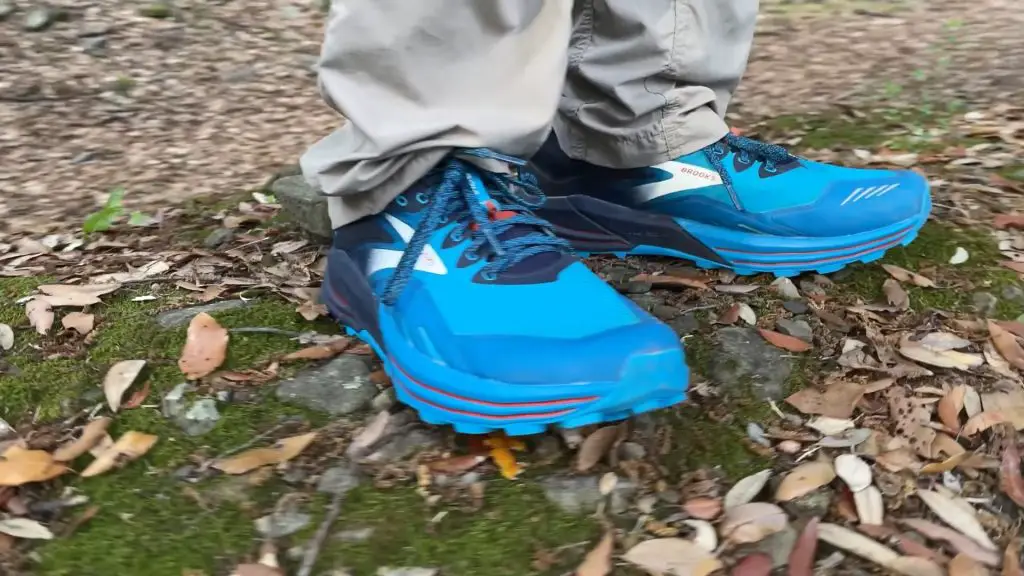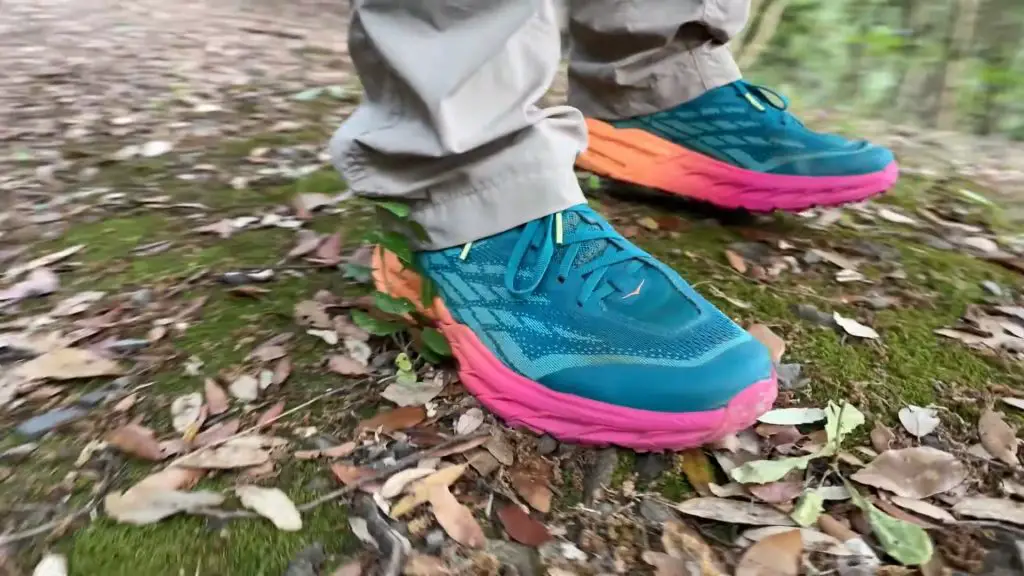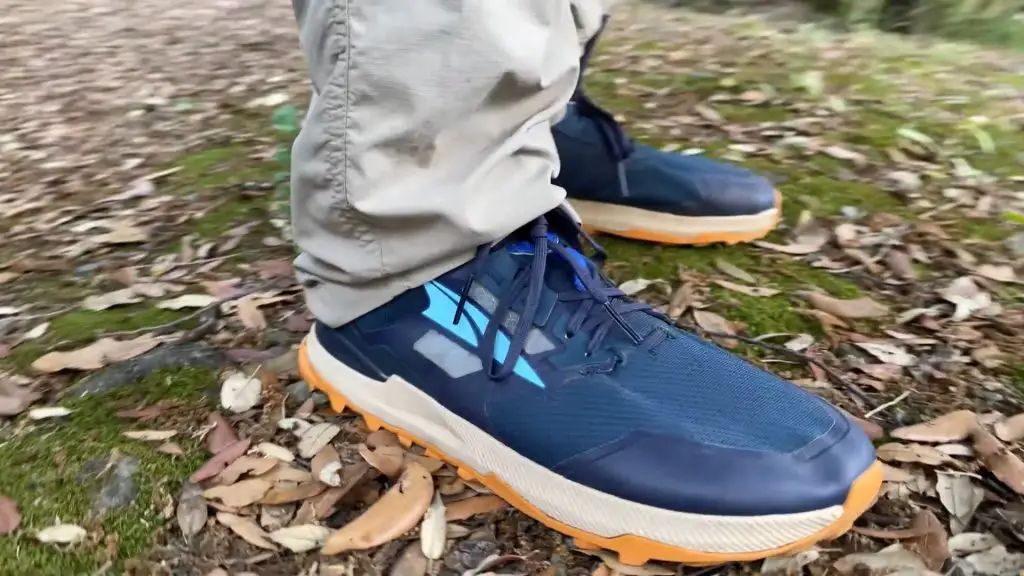Trail running shoes offer a lightweight trail-ready option for hikers that prefer speed and agility over protection and support. The trend from heavy mountaineering boots toward trail runners has been strong for many years.
The Brooks Cascadia 16, the Altra Lone Peak 7, and the HOKA Speedgoat 5 are three of the world’s most popular trail running shoes. I recently brought all three on an 85-mile thru-hike from Bologna to Florence, Italy.
This review will share my impressions and test data on these three amazing shoes. I use affiliate links in this post to support my independent testing of hiking footwear.
I hiked 40+ miles in each shoe, including training hikes and the 85-mile thru-hike.
I also tested each shoe for time-to-dry, protection, and traction.
During the thru-hike, I wore each shoe swapping them out after 6 miles or so to even out the mileage. In my experience, it becomes obvious which shoe is the best after a day or two.
I share that information below.
TABLE OF CONTENTS
Brooks Cascadia 16
- Weight US 12 Men: 379 grams
- Stack Height: 33 mm heel, 25 mm forefoot (8 mm drop)
- Waterproof: No (GTX available)
- The Good: Excelled at comfort, stability, protection, and traction.
- The Bad: It took longer to dry.

The Brooks Cascadia 16 was the most traditional of the three trail running shoes I tested; in my experience, it was the best.
They excel in comfort, stability, protection, and traction.
I rotated the sequence in which I wore each shoe daily. I was always happiest when the Brooks Cascadia 16 was scheduled for the day’s final leg.
With tired feet and lower legs, the Brooks Cascadia 16 provided added reliability that helped me push through the final miles of the day.
I was surprised to find that the Brooks Cascadia 16 is more comfortable for hiking than the Altra Lone Peak 7 or the HOKA Speedgoat 5. See those shoe reviews below to understand why they fell short.
All three shoes provided superior traction. On day five, I walked 24 miles and spent the first six miles on uphill paths in a rainstorm. The Brooks Cascadia 16 gripped the muddy trail very well.
On Strava, I ranked number 10 all-time for that steep ascent. This reinforced my impressions of how great the Brooks Cascadia 16 is on muddy, wet trails.
I also do head-to-head testing for traction, putting a different shoe on each foot and quickly hiking up and down a steep hill on dirt and loose debris. I detected no noticeable difference between the three shoes, which confirms what I experienced on the trail.
The Brooks Cascadia 16 also excelled at protection. Over the five days, I stubbed my toe occasionally in all three shoes and never experienced any issues.
For protection underfoot, the Cascadia 16 feature a Ballistic Rock Shield. This feature and an excellent midsole provide superior protection and traction. On large stones, I felt connected to the trail but also protected.
For protection, I also run head-to-head testing stepping on a stone with each shoe to see which one transfers less of the shape of the stone to the bottom of my foot. The Brooks Cascadia 16 and the HOKA Speedgoat 5 were virtually indistinguishable, but both easily beat the Altra Lone Peak 7.
The Brooks Cascadia 16 was noticeably better for stability than the HOKA Speedgoat 5 and the Altra Lone Peak 7. They feature a stability design component that the other two lack.
The final test I did was time-to-dry. I take the dry weight, dunk each shoe in water for a few seconds, and reweigh them to calculate the percent weight increase. I then weighed the shoes every hour for nine hours.
The Brooks Cascadia 16 took on less than 60% of its dry weight in water and still had about 20% after 9 hours. The shoes feature ports to remove excess water but still soak up too much water and take longer to dry than the other two shoes.
Final Verdict: These are the best trail running shoes for hiking, in my estimation of the three I tested. They are traditional and reliable, excelling in all categories except time-to-dry.
HOKA Speedgoat 5
- Weight US 11.5 Men: 317 grams
- Stack Height: 33 mm heel, 29 mm forefoot (4 mm drop)
- Waterproof: No (GTX available)
- The Good: Great traction, comfortable ride, quick-drying.
- The Bad: Slight toe pinch downhill, less stable than Brooks Cascadia 16.

My hobby is testing hiking footwear; these are the first pair of HOKA shoes I have ever tested. My expectations levels were off the charts because I know how many people enjoy walking and running in HOKA.
I saw several hikers along the trail from Bologna to Florence that were wearing HOKA shoes.
Regarding comfort, the HOKA Speedgoat 5 was the most cushioned and plush of the three shoes. Its thick EVA midsole absorbs impact, especially on downhill sections where I could lean into my heel strike.
In my experience, I did not find a vast difference in cushioning between the HOKA Speedgoat 5 and the Brooks Cascadia 16. I thought the difference would have been more noticeable.
One drawback for me was the tapered toe. I felt some pressure on the sides of my toes when going downhill as my foot slipped to the front of the shoe.
For stability, the HOKA Speedgoat 5 has a thick midsole that cushioned my foot but made me feel wobbly on uneven surfaces. A few times, I felt my foot sliding off the side of the midsole, which was not very reassuring. This happened on a downhill rocky path on the last day.
For traction, the HOKA Speedgoat 5 performed superbly in testing and hiking. They feature 5 mm lugs and the MegaGrip compound from Vibram. I have tested MegaGrip in the past for grip and know firsthand how grippy it is.
On the trail, the HOKA Speedgoat 5 provided excellent traction on various surfaces such as asphalt, packed dirt, mud, gravel, rocks, stone, and field grass.
Similarly, in the head-to-head testing, I detected no difference between the Speedgoat 5 and the two other shoes for traction.
For Time-to-Dry, the HOKA Speedgoat 5 took on 40% of its weight in water and, after 9 hours, was only 1% above its dry weight.
Speedgoat 5 could be a good option for multiday hikes in wet conditions if you can air them out at night.
Final Verdict: The HOKA Speedgoat 5 lacks a built-in stability system typical of hiking shoes. In certain off-camber situations, I felt the shoe sliding out from under my foot. This never resulted in injury.
It is a trail runner that performs well for traction, comfort, protection, and time-to-dry. On less technical hiking paths, the HOKA Speedgoat 5 will work great.
Altra Lone Peak 7
- Weight US 11.5 Men: 326 grams
- Stack Height: 25 mm heel, 25 mm forefoot (0 mm drop)
- Waterproof: No
- The Good: Nimble, agile platform that connects you to the trail.
- The Bad: My feet tended to wear out more quickly, especially at the end of the day.

Like HOKA, Altra is another brand I was eager to test. Lone Peak is the flagship model for Altra and has been adapted by many thru-hikers.
The Altra Lone Peak 7 feels great on the trail. It is an entirely different experience from either the Brooks Cascadia 16 or the HOKA Speedgoat 5.
They feature a zero-drop design with a 25 mm stack height. There is no rock plate, but the outsoles are superb for protection and traction.
The result of this design is that I felt very connected to the trail. The Altra Lone Peak 7 requires more from you as a user. The upside is that you are more agile and nimble on the trail. The downside for me was that my feet tended to fatigue more after big miles than they did in the Brooks Cascadia 16 or the HOKA Speedgoat 5.
As stated above, the Altra Lone Peak 7 provided superior traction, equalling that of the two other shoes tested in on-trail performance and head-to-head testing.
For protection, I did stub my toe in these shoes a few times and suffered no deleterious effects. The toecap worked well.
For protection underfoot, I experienced zero issues on the trail. In head-to-head testing, they lost to the two other shoes. The lower stack means that you feel everything you step on. This is the tradeoff for being more nimble and feeling more connected to the trail.
They performed very well for time-to-dry, taking on only 36% of their dry weight in water. After nine hours, they only had about 5%. The Altra Lone Peak 7 could be a good option for a multi-day hike in wet conditions.

